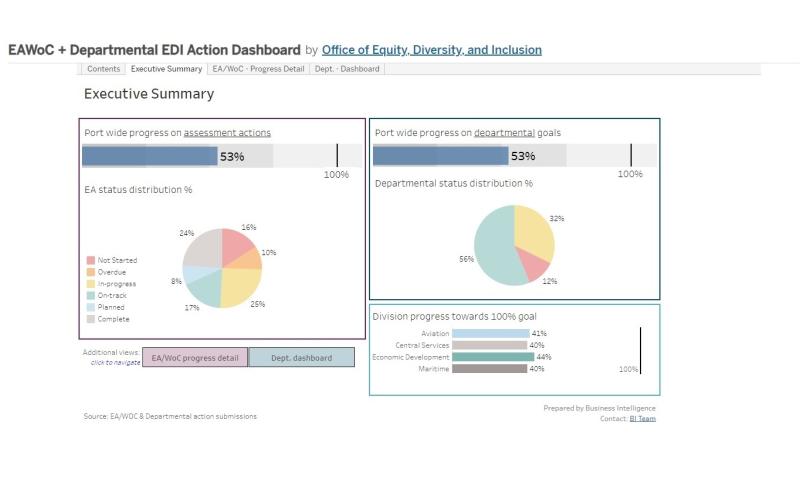
Our budget is both a fiscal and moral document. It reflects our priorities and values – both to the communities we serve and to ourselves.
The mission of the Port of Seattle is to promote economic opportunities and quality of life in the region by advancing trade, travel, commerce, and job creation in an equitable, accountable, and environmentally responsible manner. The Port’s values are respect, anti-racism and equity, integrity, stewardship, and excellence (aka R.A.I.S.E.). And, the Port has a Century Agenda goal, among other goals, of becoming a “model of equity, diversity, and inclusion.” Our budget should reflect all of this.
Beginning in 2022, the Port required all departments to use a tool known as the Equity in Budgeting Playbook to create their annual budgets. The Port of Seattle’s Equity in Budgeting Playbook is designed to integrate explicit considerations of racial equity into decisions, including policies, practices, programs, and ultimately, departmental budgets. Using this tool helps develop strategies and actions that reduce inequities, with a particular focus on racial inequities, and improve success for everyone. The most recent version of this tool is the 2026 Equity in Budgeting Playbook.
Beginning with the 2024 Equity in Budgeting Playbook and as per of the Port of Seattle Commission’s Equity Policy Directive, the Port created a definition of “equity spending,” calculated that spending over the last several years, and created a pilot project for tracking equity spending going forward.
Equity spending is a term developed and defined by a cross-departmental team of Port employees, and it is used to measure how the organization invests in staff, communities, businesses, and projects and programs that advance equity, diversity, and inclusion. By using this definition to evaluate our budget, we gain a better understanding of how our investments are contributing to our equity goals, and we can be transparent and accountable about how we are using public resources to advance equity.
To view our equity spending analysis and the areas in which we are investing in equity, please visit the Equity Spending and Accountability Project (ESAP) Dashboard.
Defining Equity Spending
A budget item is classified as equity spending if it meets at least one of the three definitions below.
- Invests directly in structurally excluded communities, either through grants, contracts, programs, sponsorships, or dedicated facilities.
- Invests in businesses and individuals outside of the Port to help us realize our internal and external equity priorities.
- Invests in Port employees whose essential work functions were designed to primarily focus on advancing equity work.
If the budget item meets one of the above three definitions, then it is sorted into the most applicable category below.
- Advancing Diversity – a budget item that increases diversity (race, gender, income, etc.) internally and/or externally.
- Supplier Diversity – a budget item that builds the capacity of WMBEs or DBEs, grows the pool of WMBEs or DBEs, and/or strengthens the Port’s ability to contract with WMBEs or DBEs.
- Removing Systemic Barriers – a budget item used to address and change policies, programs, and systems that create disproportionate access to opportunities, information, and services.
- Engagement – a budget item used to engage BIPOC communities and/or structurally excluded communities.
- Community Investments – a budget item that invests in BIPOC communities and/or structurally excluded communities.
- Environmental Justice – a budget item that addresses and/or improves environmental issues that disproportionately affect BIPOC and/or structurally excluded communities.
Now that the Port has developed ESAP and conducted this initial audit of our budgets, we can use this data to serve as a baseline for our investments moving forward. We are also using this data to make informed decisions about strategic investments moving forward and track the progress of those investments. ESAP will be implemented on an annual basis, and the data on the dashboard will be updated annually.





